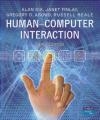Human Computer Interaction
Gregory Abowd, Alan Dix, Russell Beale
Human Computer Interaction
Gregory Abowd, Alan Dix, Russell Beale
- Producent: Prentice Hall
- Rok produkcji: 2003
- ISBN: 9780130461094
- Ilość stron: 880
- Oprawa: Twarda
Niedostępna
Opis: Human Computer Interaction - Gregory Abowd, Alan Dix, Russell Beale
The second edition of Human-Computer Interaction established itself as one of the classic textbooks in the area, with its broad coverage and rigorous approach, this new edition builds on the existing strengths of the book, but giving the text a more student-friendly slant and improving the coverage in certain areas. The revised structure, separating out the introductory and more advanced material will make it easier to use the book on a variety of courses. This new edition now includes chapters on Interaction Design, Universal Access and Rich Interaction, as well as covering the latest developments in ubiquitous computing and Web technologies, making it the ideal text to provide a grounding in HCI theory and practice.Contents Foreword Preface to the third edition Preface to the second edition Preface to the first edition Introduction Part 1 Foundations Chapter 1 The human 1.1 Introduction 1.2 Input-output channels Design Focus: Getting noticed Design Focus: Where's the middle? 1.3 Human memory Design Focus: Cashing in Design Focus: 7 +- 2 revisited 1.4 Thinking: reasoning and problem solving Design Focus: Human error and false memories 1.5 Emotion 1.6 Individual differences 1.7 Psychology and the design of interactive systems 1.8 Summary Exercises Recommended reading Chapter 2 The computer 2.1 Introduction Design Focus: Numeric keypads 2.2 Text entry devices 2.3 Positioning, pointing and drawing 2.4 Display devices Design Focus: Hermes: a situated display 2.5 Devices for virtual reality and 3D interaction 2.6 Physical controls, sensors and special devices Design Focus: Feeling the road Design Focus: Smart-Its - making sensors easy 2.7 Paper: printing and scanning Design Focus: Readability of text 2.8 Memory 2.9 Processing and networks Design Focus: The myth of the infinitely fast machine 2.10 Summary Exercises Recommended reading Chapter 3 The interaction 3.1 Introduction 3.2 Models of interaction Design Focus: Video recorder 3.3 Frameworks and HCI 3.4 Ergonomics Design Focus: Industrial interfaces 3.5 Interaction styles Design Focus: Navigation in 3D and 2D 3.6 Elements of the WIMP interface Design Focus: Learning toolbars 3.7 Interactivity 3.8 The context of the interaction Design Focus: Half the picture? 3.9 Experience, engagement and fun 3.10 Summary Exercises Recommended reading Chapter 4 Paradigms 4.1 Introduction 4.2 Paradigms for interaction 4.3 Summary Exercises Recommended reading Part 2 Design process Chapter 5 Interaction design basics 5.1 Introduction 5.2 What is design? 5.3 The process of design 5.4 User focus Design Focus: Cultural probes 5.5 Scenarios 5.6 Navigation design Design Focus: Beware the big button trap Design Focus: Modes 5.7 Screen design and layout Design Focus: Alignment and layout matter Design Focus: Checking screen colors 5.8 Iteration and prototyping 5.9 Summary Exercises Recommended reading Chapter 6 HCI in the software process 6.1 Introduction 6.2 The software life cycle 6.3 Usability engineering 6.4 Iterative design and prototyping Design Focus: Prototyping in practice 6.5 Design rationale 6.6 Summary Exercises Recommended reading Chapter 7 Design rules 7.1 Introduction 7.2 Principles to support usability 7.3 Standards 7.4 Guidelines 7.5 Golden rules and heuristics 7.6 HCI patterns 7.7 Summary Exercises Recommended reading Chapter 8 Implementation support 8.1 Introduction 8.2 Elements of windowing systems 8.3 Programming the application Design Focus: Going with the grain 8.4 Using toolkits Design Focus: Java and AWT 8.5 User interface management systems 8.6 Summary Exercises Recommended reading Chapter 9 Evaluation techniques 9.1 What is evaluation? 9.2 Goals of evaluation 9.3 Evaluation through expert analysis 9.4 Evaluation through user participation 9.5 Choosing an evaluation method 9.6 Summary Exercises Recommended reading Chapter 10 Universal design 10.1 Introduction 10.2 Universal design principles 10.3 Multi-modal interaction Design Focus: Designing websites for screen readers Design Focus: Choosing the right kind of speech Design Focus: Apple Newton 10.4 Designing for diversity Design Focus: Mathematics for the blind 10.5 Summary Exercises Recommended reading Chapter 11 User support 11.1 Introduction 11.2 Requirements of user support 11.3 Approaches to user support 11.4 Adaptive help systems Design Focus: It's good to talk - help from real people 11.5 Designing user support systems 11.6 Summary Exercises Recommended reading Part 3 Models and theories Chapter 12 Cognitive models 12.1 Introduction 12.2 Goal and task hierarchies Design Focus: GOMS saves money 12.3 Linguistic models 12.4 The challenge of display-based systems 12.5 Physical and device models 12.6 Cognitive architectures 12.7 Summary Exercises Recommended reading Chapter 13 Socio-organizational issues and stakeholder requirements 13.1 Introduction 13.2 Organizational issues Design Focus: Implementing workflow in Lotus Notes 13.3 Capturing requirements Design Focus: Tomorrow's hospital - using participatory design 13.4 Summary Exercises Recommended reading Chapter 14 Communication and collaboration models 14.1 Introduction 14.2 Face-to-face communication Design Focus: Looking real - Avatar Conference 14.3 Conversation 14.4 Text-based communication 14.5 Group working 14.6 Summary Exercises Recommended reading Chapter 15 Task analysis 15.1 Introduction 15.2 Differences between task analysis and other techniques 15.3 Task decomposition 15.4 Knowledge-based analysis 15.5 Entity-relationship-based techniques 15.6 Sources of information and data collection 15.7 Uses of task analysis 15.8 Summary Exercises Recommended reading Chapter 16 Dialog notations and design 16.1 What is dialog? 16.2 Dialog design notations 16.3 Diagrammatic notations Design Focus: Using STNs in prototyping Design Focus: Digital watch - documentation and analysis 16.4 Textual dialog notations 16.5 Dialog semantics 16.6 Dialog analysis and design 16.7 Summary Exercises Recommended reading Chapter 17 Models of the system 17.1 Introduction 17.2 Standard formalisms 17.3 Interaction models 17.4 Continuous behavior 17.5 Summary Exercises Recommended reading Chapter 18 Modeling rich interaction 18.1 Introduction 18.2 Status-event analysis 18.3 Rich contexts 18.4 Low intention and sensor-based interaction Design Focus: Designing a car courtesy light 18.5 Summary Exercises Recommended reading Part 4 Outside the box Chapter 19 Groupware 19.1 Introduction 19.2 Groupware systems 19.3 Computer-mediated communication Design Focus: SMS in action 19.4 Meeting and decision support systems 19.5 Shared applications and artifacts 19.6 Frameworks for groupware Design Focus: TOWER - workspace awareness Exercises Recommended reading Chapter 20 Ubiquitous computing and augmented realities 20.1 Introduction 20.2 Ubiquitous computing applications research Design Focus: Ambient Wood - augmenting the physical Design Focus: Classroom 2000/eClass - deploying and evaluating ubicomp 20.3 Virtual and augmented reality Design Focus: Shared experience Design Focus: Applications of augmented reality 20.4 Information and data visualization Design Focus: Getting the size right 20.5 Summary Exercises Recommended reading Chapter 21 Hypertext, multimedia and the world wide web 21.1 Introduction 21.2 Understanding hypertext 21.3 Finding things 21.4 Web technology and issues 21.5 Static web content 21.6 Dynamic web content 21.7 Summary Exercises Recommended reading References Index
Szczegóły: Human Computer Interaction - Gregory Abowd, Alan Dix, Russell Beale
Tytuł: Human Computer Interaction
Autor: Gregory Abowd, Alan Dix, Russell Beale
Producent: Prentice Hall
ISBN: 9780130461094
Rok produkcji: 2003
Ilość stron: 880
Oprawa: Twarda
Waga: 1.59 kg


















